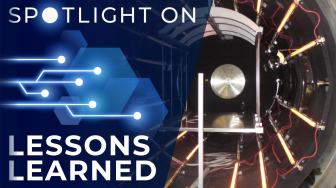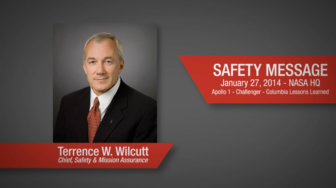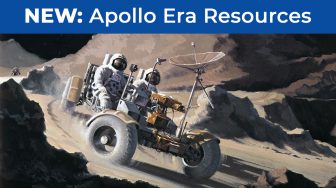results
-
 Spotlight on Lessons Learned: Best Practices for the Elemental Profiling of High-Purity Hydrazine
Spotlight on Lessons Learned: Best Practices for the Elemental Profiling of High-Purity HydrazineBest practices for conducting high-purity hydrazine elemental analysis processes must be followed to avoid sample contamination that could impact space missions.
-
 Spotlight on Lessons Learned: Copper Tube Pinch Failure
Spotlight on Lessons Learned: Copper Tube Pinch FailureWhile pinching copper tubes is a standard practice for many applications on Earth, it presents challenges for spaceflight applications.
-
 Spotlight on Lessons Learned: Thermal Vacuum Lamp Spectrum
Spotlight on Lessons Learned: Thermal Vacuum Lamp SpectrumPotential modeling inaccuracy may be avoided in thermal vacuum tests by using heater plates instead of quartz lamps.
-
 Apollo 1 Case Study (SMA-OV-WBT-118)
Apollo 1 Case Study (SMA-OV-WBT-118)This course provides a brief overview of the Apollo 1 mishap which occurred at NASA KSC in 1967.
-

-
 Apollo 1-Challenger-Columbia
Apollo 1-Challenger-ColumbiaEvery year as we get back in the saddle, our Remembrance Day signals us to think back to the tragic events of Apollo 1, Challenger and Columbia as well as the context surrounding them. We’re accountable for learning from not just what went wrong, but how we recovered. As an example, read these rules recorded by Wayne Hale, former NASA Flight Director and Space Shuttle Program Manager. By actually applying such lessons from the past to your current work, our actions can honor our lost crews beyond silent reflection.
-
 Apollo 13 Case Study (SMA-OV-WBT-119)
Apollo 13 Case Study (SMA-OV-WBT-119)This course provides a brief overview of the Apollo 13 mishap which occurred in 1970.
-

-
 Apollo Era Resources
Apollo Era ResourcesA collection of articles and publications, case studies, and videos on the Apollo program to assist researchers, facilitators, and the technical workforce.





